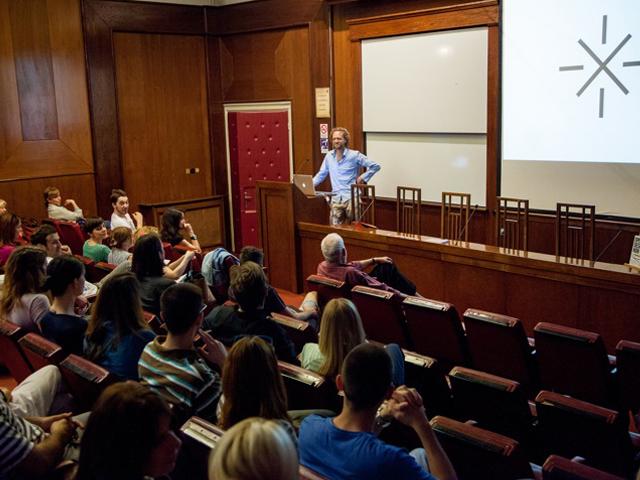Belgrade has been burned down 19 times in history, including the recent bombings 13 years ago. It is a city, which has been rebuilt and reused over and over. The historical layer cake won’t go unnoticed when walking around the streets of Belgrade. It is like this superficial versioning system showing its revisions and forks like an open source system.
Alice Mela and I were visiting Belgrade on an invitation by Nova Iskra, a design incubator, and the Dutch Embassy. The goal of the visit was to exchange information about incubation, open design and Fablab. The team behind Nova Iskra is a collective of pioneering young designers and activist; inspiring, energetic people eager to give a boost to the cultural and economical system of Belgrade and Serbia as a whole. A very positive approach knowing that Belgrade has been burned down so many times. I can imagine pioneering, for which you at least need some long term vision and belief, doesn’t come natural in such an environment.
Many times as a pioneer you have to change systems to achieve your goal. This is where you become the political designer (I think personally all design is political) who has to deal with the “dark matter” around us, as Dan Hill would say.
“The notion of ‘dark matter’ – just like in the universe, in the civic sphere there is dark matter - the systems and processes that make things happen but that we cannot see and only know about because of the effect on how things are done” - Dan Hill, Helsinki Design Lab
So if you want to change how things are done (because they don’t work for you) you have to deal with this dark matter. You have to bring this dark matter to the surface, tinker with it, change it and make it transparent for anyone to follow. Pioneers tend to see possibilities invisible for policymakers. Every society has its dark matter, but from the discussions I had with the Nova Iskra team it seems they have to deal with a lot of it.
So where do you start if you want to create a relevant design culture in Serbia?
Marko and Relja, two of the initiators, were telling me they were setting up this collaboration with an almost closed, very crafty wood factory in the south of Serbia. They’d already started creating the furniture for the Nova Iskra collaborative working space and eventually they’d start working with the designers on a product line. This will change completely the business model for the factory, as they do not have a product portfolio of themselves to this point. Also the Nova Iskra designers will start working with craftspeople from rural villages to develop this portfolio.

They’re also thinking about starting a Fablab to create low threshold access for the creative community in Belgrade, set-up local production facilities and offer an alternative education programme. To sustain this the need to sell products and create services. The great thing about having local production facilities in combination with the Internet is that you can start you international online sales directly. Given that you have something like Paypal or any easy online payment structure. Well… they don’t have that in Serbia, due to the current banking system. I guess that’s some of the dark matter they have to deal with first.
If you look closely at the systems involved in creating and selling something as simple as a chair or a table, you’re already dealing with multi-stakeholder issues. There is a whole ecosystem around it, including the dark matter. That makes design a political act and political systems need trust and transparency to create shared value. This has to be facilitated in both the design process and the artefact. Open design can help to do this. To me open design is about designing the stuff around us as open systems where there is space for discussion, reuse and interpretation along the stakeholder ‘chain’. Openness in design is a condition to be able to create valuable relations.
Nova Iskra reminded me again to see the world as something we have to uncover to make it our own; no matter how far away the system is from helping you to do that. Open structures can help us to do that today. This way we can remake and reuse much of the work, which already has been done. Like looking at the whole world as an open design project. We have to keep in mind that what we create today must be adaptable tomorrow, as there will be a next ambitious group of young people in need for change.
I’d like to thank the team in Belgrade for the inspiring talks we’ve had and the warm welcome you gave us. You’re doing great work and therefore I’m also very proud to announce I’ve been asked to join the advisory board of Nova Iskra.
